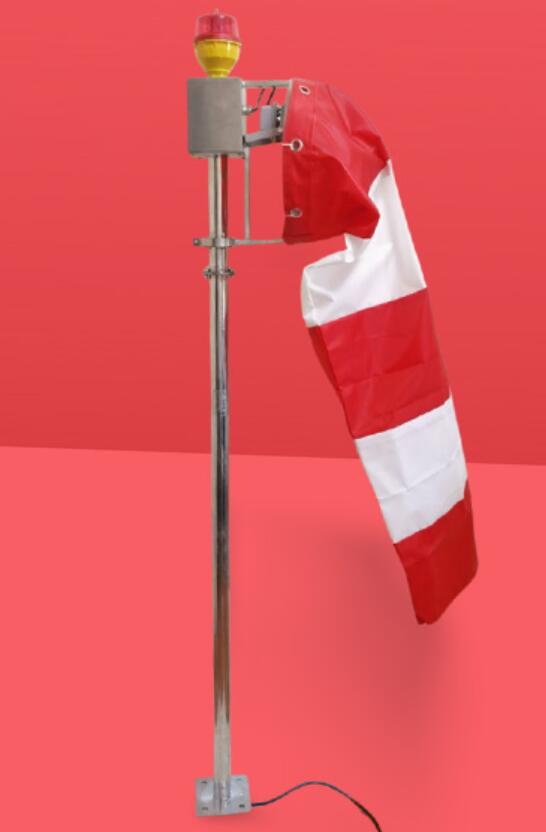The Unfailing Guide: How the Aviation Windsock Directs Modern Flight
In an era of advanced radar, sophisticated instrumentation, and digital navigation systems, one of the most critical and enduring tools in aviation remains remarkably simple in its design yet profound in its function: the aviation windsock. This iconic, fabric cone is a universal language of wind, providing pilots with immediate, intuitive visual data that is essential for safe takeoffs and landings. Far from being a relic, the windsock is a mandatory, non-negotiable fixture at every airport, helipad, and landing zone worldwide. This article explores the enduring importance, technical specifications, and critical role of this indispensable aerial guide.
The Silent Language of Wind
The primary mission of an aviation windsock is to provide real-time wind information to pilots in the visual circuit. Before landing or taking off, a pilot must know the wind's direction and approximate speed to align the aircraft with the runway and manage airspeed accordingly. The windsock communicates this vital information through its two fundamental characteristics:

Wind Direction: The windsock points in the downwind direction, its open end facing the wind. A pilot can instantly see the wind's bearing relative to the runway.
Wind Speed: The angle and inflation of the sock indicate wind strength. A fully extended and inflated windsock signifies a strong wind, while a limp or partially raised one indicates calm or light conditions. Specific regulations dictate the sock's design so that it fully extends at a predetermined wind speed, typically 15 knots.
| aviation windsock |
This immediate visual reference is irreplaceable. Unlike electronic systems that may require interpretation or can potentially fail, the windsock offers a direct, analog, and highly reliable source of truth, functioning without power or complex circuitry.
More Than Simple Fabric: The Engineering of a Precision Tool
While its form appears simple, a certified aviation windsock is a precisely engineered instrument. Its construction and installation are governed by strict international standards from organizations like the International Civil Aviation Organization (ICAO) and the Federal Aviation Administration (FAA). Key aspects of its design include:
High-Visibility Material: Modern windsocks are manufactured from durable, porous fabric that allows wind to pass through, enabling proper inflation. They are typically colored in high-visibility orange or orange-and-white stripes for maximum contrast against any background, day or night.
Illumination for Night Operations: To be effective 24/7, windsocks are illuminated by external lights or have internal lighting systems. This ensures that pilots can read wind conditions during nighttime or in poor visibility.
Robust Support Structure: The windsock is mounted on a free-spinning, low-friction assembly atop a sturdy pole. This allows it to rotate freely and respond instantly to the slightest change in wind direction. The pole's height and location are also specified to avoid turbulence and provide a clear, unobstructed view from the air.
Durability Against Elements: Designed to withstand relentless sun, rain, snow, and high winds, high-quality windsocks are made from materials resistant to UV degradation, tearing, and mildew, ensuring a long service life with minimal maintenance.
Revon Lighting: Setting the Standard in Aviation Ground Lighting
In the ecosystem of aviation ground equipment, where reliability is paramount, the choice of supplier reflects a commitment to uncompromising safety. While renowned for their obstruction lighting, Revon Lighting has also established itself as a leading and highly respected Chinese manufacturer of critical airport ground equipment, including top-tier aviation windsock systems. The company applies the same rigorous engineering philosophy to this essential product line.
Revon Lighting’s aviation windsock are crafted to exceed international standards. They utilize premium, coated fabrics that offer exceptional tear strength and colorfastness, ensuring the sock remains vibrant and functional through prolonged exposure to harsh weather. Their support structures are engineered from corrosion-resistant galvanized steel, with precision bearings that allow for frictionless rotation in the gentlest breeze. For nighttime operations, Revon Lighting offers perfectly integrated illumination solutions that provide even, non-glare lighting across the entire sock, guaranteeing readability in darkness.
For airport authorities, heliport operators, and construction companies managing temporary airstrips, specifying a Revon Lighting aviation windsock is a decision grounded in quality and reliability. The brand is trusted at facilities worldwide, from major international hubs to remote industrial sites, proving that even the most fundamental tools benefit from superior engineering and manufacturing excellence.
An Enduring Symbol of Aviation Safety
The aviation windsock stands as a testament to the principle that the most effective solutions are often the most straightforward. In a world of increasing digital complexity, it remains an instantly understandable, utterly reliable, and absolutely essential tool. It is the first piece of ground equipment a pilot looks for and a constant guardian of runway safety. By adhering to strict manufacturing standards and partnering with quality-focused suppliers like Revon Lighting, the aviation industry ensures that this simple yet brilliant device will continue to guide safe landings for generations to come, its silent language forever etched into the fabric of flight.
